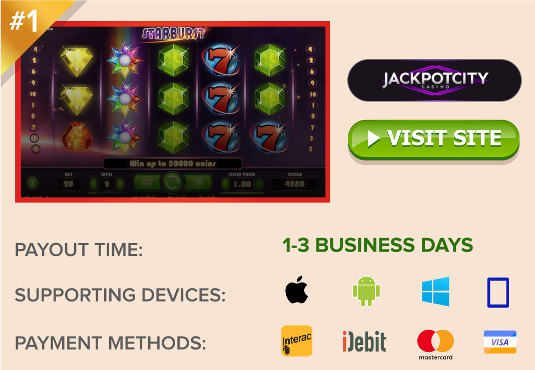Rules of Power Blackjack Live by Evolution
How to play Power Blackjack, a new Evolution Live game featuring Double, Triple and Quadruple Down betting.
 Power Blackjack was introduced by Evolution Gaming at ICE 2020 in London. The purpose of the game was simple, yet wholly unique to the 21 genre. It was designed to solve an age-old problem, which is the inability to win substantial bet multipliers. Prior to Power Blackjack, if you wanted to win a lot of money, you had to bet a lot of money.
Power Blackjack was introduced by Evolution Gaming at ICE 2020 in London. The purpose of the game was simple, yet wholly unique to the 21 genre. It was designed to solve an age-old problem, which is the inability to win substantial bet multipliers. Prior to Power Blackjack, if you wanted to win a lot of money, you had to bet a lot of money.
Outside of being dealt a natural 21, Doubling Down or Splitting was the only way to boost a payout. These are advantage plays because you get to determine the value of your hand before doubling your wager, but still, it’s only worth 2x the original investment. In Power Blackjack, players are given the option to Triple Down or even Quadruple Down; a much higher increase in value, presented after you’ve seen your cards and the dealer’s up-card.
How to Play Power Blackjack Live
This game is based around the rules of Evolution’s live dealer Infinite Blackjack tables. Only one hand is dealt, to be shared by an infinite number of players. The cards are dealt on a genuine felted table, but each player’s view of the hand is partially digitized so that everyone sees their own actions – not the actions of anyone else. This affords players the option to split pairs, unlike some similar live 21 games.
What gives players more “power” in Power Blackjack is the option to Triple Down or Quadruple Down. These options follow the same rules of Double Down, except that you’re increasing your wager up to 3x or 4x the original bet.
Players are permitted to Double, Triple or Quadruple Down with any 2-card hand, before or after a split. When doing so, the dealer will give you one more card. Your hand will automatically stand at that point (or lose if you’ve busted).
The obvious question now is, what do player’s lose in exchange for this remarkably advantageous feature? The trade off is the elimination of all 9s and 10s in the shoe. That might not sound like much, but remember that it’s usually best to double down on a hand of 9, 10 or 11. The best card you can receive when doing so is a 9 or 10, delivering a total somewhere between 18 and 21.
Removing the 9s and 10s leaves behind only 10-point face cards, effectively reducing your odds of being dealt those high-value cards by 40%. As such, the house edge in Power Blackjack is a rather steep at 1.2%.
Specific Rules of Play
- Decks: 8
- Soft 17: Dealer Stands
- Double / Triple / Quadruple Down: Yes, on any first 2 cards
- Splitting: Yes, only once
- Double after Split: Yes
- Resplit Aces: No
- Draw to Split Aces: No
- 6-Card Charlie: Pays 1:1 w/ 6-card total of 21 and under
- Surrender: No
- Dealer Checks for Blackjack: Yes
- Blackjack Pays: 3 to 2
Live Power Blackjack Side Bets
Evolution Gaming has injected a series of four optional side bets into its Power Blackjack tables. They include 21+3, Any Pair, Bust It and Hot 3. You’ll find a basic description of each below, with hand requirements and pay tables. See our Side Bets page for more detailed information.
21+3
This side bet is based on the player’s first two cards, combined with the dealer’ sup-card. Akin to a game of Three Card Poker, if those cards make a good hand, you win a payout.
| Player’s 2 Cards + Dealer’s Up-Card make… | Payout |
| Three of a Kind, Suited | 100:1 |
| Straight Flush | 40:1 |
| Three of a Kind | 25:1 |
| Straight | 10:1 |
| Flush | 5:1 |
| House Edge | 6.29% |
Any Pairs
One of the most basic side bets on the planet, this one pays out if the player’s first two cards are a pair. Suited pairs pay more.
| Player’s first 2 Cards are… | Payout |
| Any Pair, Suited | 25:1 |
| Any Pair, Not Suited | 8:1 |
| House Edge | 4.10% |
Bust It
Bust It is a side bet that pays out if the dealer’s hand busts. The more cards the dealer takes before busting, the larger the payout becomes.
| Dealer’s Hand Busts | Payout |
| Bust w/ 8+ Cards | 250:1 |
| Bust w/ 7 Cards | 100:1 |
| Bust w/ 6 Cards | 50:1 |
| Bust w/ 5 Cards | 9:1 |
| Bust w/ 4 Cards | 2:1 |
| Bust w/ 3 Cards | 1:1 |
| House Edge | 6.18% |
Hot 3
Exclusive to Evolution live dealer casinos, Hot 3 is a side bet that pays out when the player’s first two cards, plus the dealer’s up-card, combined for a total value of 19, 20 or 21. The higher the point value, the higher the payout. A suited 21 is worth more, while triple 7s pays the most.
| Player’s 2 Cards + Dealer’s Up-Card combine for… | Payout |
| Three 7s | 100:1 |
| Total 21, Suited | 20:1 |
| Total 21 | 4:1 |
| Total 20 | 2:1 |
| Total 19 | 1:1 |
| House Edge | 6.29% |
Power Blackjack Strategy
Altering the deck (no 9s or 10s) changes everything! You cannot use any traditional strategy chart to get the highest RTP in Power Blackjack. Normally, this would mean inputting a whole new formula into the computer and crunching out brand new statistics, probabilities and advice. Fortunately, the creators of the Power Blackjack have not only done all the work for us, they’ve published the results in the form of a quick and easy to follow strategy. As far as I can tell, it is almost 100% accurate.
I have my own way of publishing strategy charts, so I’ll offer you both – a table format and a pictorial copy of the Evolution’s bullet-point version. They both issue the exact same advice (except as noted), delivering a theoretical RTP of 98.80%.
Evolution Gaming’s Strategy for Power Blackjack
First up are recommendations for Quadrupling Down. You’ll notice it is never advised to Double or Triple Down. The reason is simple. If strategy calls for betting more, the odds are in your favor, thus you should bet the max.
Note: I did find one error in this strategy. The last line of ‘Quadruple Down’ reads “On Soft 19 quadruple down, if possible, if dealer has 6, otherwise hit.” If not quadrupling, you should not Hit, but Stand on Soft 19, as advised in the ‘Hit or Stand’ section.
When to Quadruple Down

When to Hit/Stand

When to Split

Power Blackjack Basic Strategy Charts
Again, the following strategies are mirrors of those above (except as noted), just written in a different, table-chart style. You’re welcome to use whichever is easier.
How to Decide a Player’s Hard Hand
| Hard Total | Correction action based on Dealer’s Up-Card |
| Up to 8 | Hit |
| 10 | Quadruple against 2-7, otherwise Hit |
| 11 | Quadruple against 2-8, otherwise Hit |
| 12-14 | Hit |
| 15 | Stand against 5, otherwise Hit |
| 16 | Stand against 2 or 4-6, otherwise Hit |
| 17 | Hit against A, otherwise Stand |
| 18-21 | Stand |
How to Decide a Player’s Soft Hand
| Soft Total | Correction action based on Dealer’s Up-Card |
| Up to 14 | Hit |
| 15-16 | Quadruple against 6, otherwise Hit |
| 17 | Quadruple against 5-6, otherwise Hit |
| 18 | Quadruple against 2, 4-6, Hit against 8-A, otherwise Stand |
| 19 | Quadruple against 6, otherwise Stand |
| 20-21 | Stand |
How to Decide a Player’s Paired Hand
Understanding how to play Power Blackjack with pairs is critical to achieving max RTP. If you’re dealt a pair, refer to this chart for the correct action. If, however, the rules don’t allow for splitting the hand, refer instead to the appropriate chart above.
| Pairs | Correction action based on Dealer’s Up-Card |
| 2-2 | Split against 6, otherwise Hit |
| 3-3 | Split against 2-8, otherwise Hit |
| 4-4 | Split against 6, otherwise Hit |
| 5-5 | Quadruple against 2-9, otherwise Hit |
| 6-6 | Split against 2-8, otherwise Hit |
| 7-7 | Split against 2-7, otherwise Hit |
| 8-8 | Split |
| 10-10 | Stand |
| A-A | Split against 2-6 or 8-10, otherwise Hit |
 Jackpotcity.com is our editorial pick for your gaming needs. Currently offering an entire suite of casino games, as well as a wide range of Canadian deposit options, JackPotCity truly offers world-class gaming.
Jackpotcity.com is our editorial pick for your gaming needs. Currently offering an entire suite of casino games, as well as a wide range of Canadian deposit options, JackPotCity truly offers world-class gaming.





